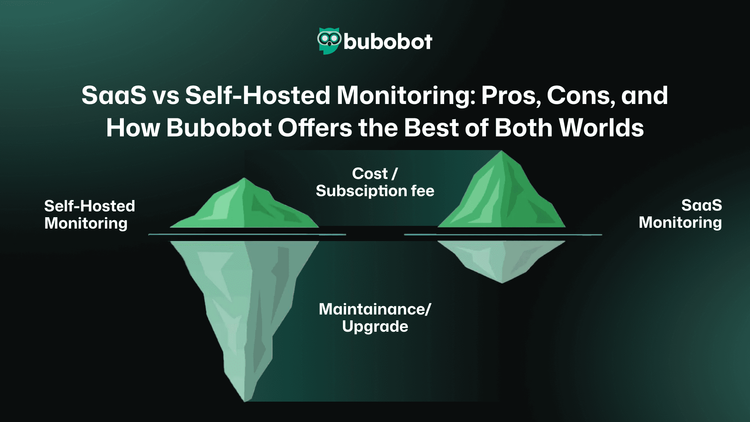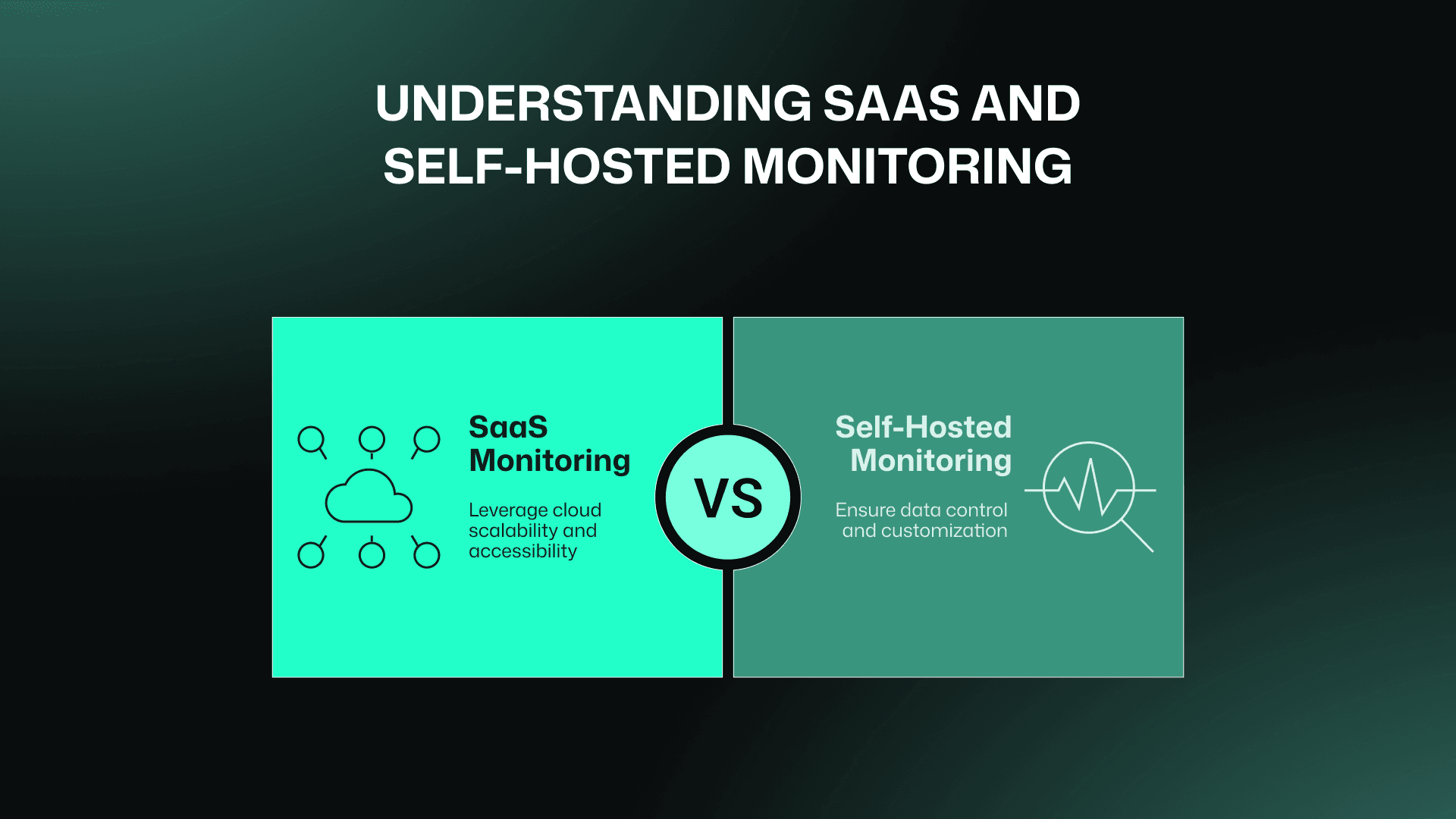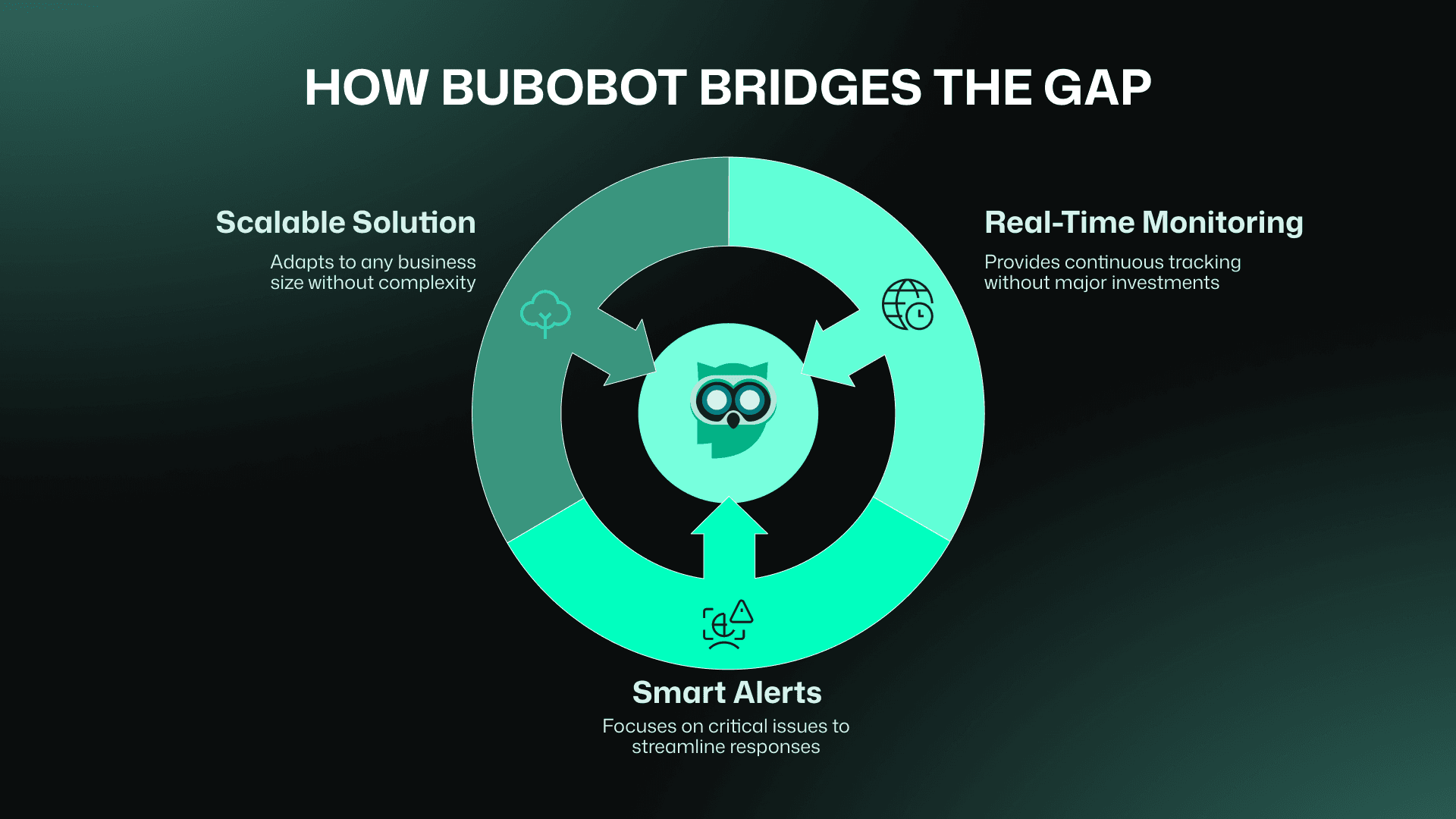SaaS vs. Self-Hosted Monitoring: Pros, Cons, and How Bubobot Bridges the Gap

Choosing how to keep an eye on your systems shouldn't give you headaches. Whether you run a small startup or manage enterprise-level operations, the decision between cloud-based monitoring and keeping everything in-house matters more than you might think. Let's cut through the noise and see what works best.
Understanding SaaS and Self-Hosted Monitoring

SaaS Monitoring: The Cloud-Based Approach
Why SaaS Works for Many Businesses
- Quick and Easy Set-up
With SaaS, you can get monitoring uptime in hours, not weeks. For example, Shopify completed its website uptime monitor deployment in under 24 hours, giving them immediate visibility into their systems.
- Automatic updates and maintenance
Forget about scheduling updates or worrying about maintenance. SaaS uptime monitoring tools handle everything behind the scenes, so your team can focus on what actually grows your business.
- Predictable costs
SaaS solutions work on a subscription model, making budgeting simpler. Companies like Netflix use this approach for consistent server uptime monitoring expenses across their growth phases.
- Access from anywhere
Need to check your systems from home or while traveling? SaaS web uptime monitoring makes remote oversight effortless, ensuring you never miss an alert even during unexpected situations.
- Built-in redundancy and reliability
Enterprise-grade uptime monitoring software providers maintain multiple data centers with comprehensive backup systems. AWS's monitoring tools deliver 99.99% uptime guarantees, ensuring your monitoring never stops monitoring.
Why SaaS Might Not be Suitable for You
Data Privacy Concerns
Your data lives on third-party servers, which can create compliance issues, especially for industries handling sensitive information. Without proper downtime monitoring, these concerns can multiply.
Limited Control
With SaaS, you don't have direct access to the underlying infrastructure, which might be a dealbreaker if you need specialized uptime detector configurations.
Ongoing Costs
While monthly fees for uptime monitoring are predictable, they can add up over time, especially as you scale your operations.
Customization Challenges
Some SaaS uptime website monitoring solutions can't handle specialized requirements, forcing organizations to maintain multiple systems for specific needs.
Self-Hosted Monitoring: The On-Premises Solution
The Good about Self-Hosted Monitoring
- Complete data control
Self-hosted uptime monitoring solutions let you manage your data and infrastructure. Financial institutions like JP Morgan Chase rely on this approach for their most critical systems that need consistent web uptime monitor reporting.
- One-time licensing investment
After the initial setup, self-hosted monitor uptime solutions don't have recurring subscription fees, which can save money in the long run for established operations.
- Extensive customization capabilities
You can customize your uptime tracking system to monitor exactly what matters to your business. Tesla, for instance, has designed specialized monitoring uptime systems to suit their unique manufacturing processes.
- Independent operation
Self-hosted uptimer tools don't rely on internet access to function, making them ideal for environments where continuous monitoring is mission-critical regardless of connectivity.
- Regulatory compliance
Organizations with strict compliance requirements often prefer self-hosted up time monitoring systems for the added control they provide. Swiss financial institutions typically choose self-hosted solutions to maintain compliance with strict banking privacy laws.
The Bad about Self-Hosted Monitoring
- High Initial Costs
Setting up a self-hosted uptime monitoring software system requires a significant upfront investment in hardware, software, and expertise. Mid-sized companies typically invest between $50,000-$200,000 in initial setup costs.
- Technical Expertise Required
Organizations need dedicated specialists to maintain uptime tracker systems. Most companies require 2-3 additional technical specialists for effective system management.
- Ongoing Maintenance
Internal teams must manage all web uptime monitoring system updates and technical issues, typically requiring 10-15 hours of weekly maintenance that could be spent on innovation.
- Complex Upgrade Processes
System upgrades for your website uptime monitor demand careful planning and execution, often leading to delayed updates and potential security vulnerabilities.
- Cost of Redundancy
Building reliable backup systems for proper server uptime monitoring requires significant additional investment, potentially doubling or tripling initial infrastructure costs.
How Bubobot Bridges the Gap

Bubobot advantages include an innovative approach that combines the benefits of both monitoring methods while eliminating their drawbacks:
1. Real-Time, Unlimited Monitoring
Bubobot provides comprehensive 24/7 API health tracking that rivals the best Pingdom alternatives without requiring major infrastructure investments. It's like having an enterprise-grade uptime detector without the hefty price tag or complexity.
2. Smart Alerts
One of the key Bubobot advantages is its intelligent alert system that makes it easy to focus on what matters most. Instead of overwhelming your team with notifications, it pinpoints critical issues, helping you respond faster than traditional Pingdom competitors.
3. Scalable Without the Stress
Whether you're a startup or a global enterprise, Bubobot scales with your needs. Among Pingdom alternatives, Bubobot advantages include getting all the benefits of powerful uptime monitoring tools without the complexity of managing them yourself.
Making the Right Choice for Your Business
Before making your final decision, here are some key factors to keep in mind:
- How much technical expertise do you have in-house for managing monitoring uptime?
- What's your budget now and in the future for uptime website monitoring?
- Do you have strict data security or compliance needs that affect your uptime tracking?
- How quickly are you planning to scale your web uptime monitor needs?
- Do you need highly customized server uptime monitoring?
Conclusion
The choice between SaaS and self-hosted monitoring depends on your organization's specific needs. SaaS offers simplicity and quick deployment, while self-hosted gives you maximum control and customization.
Bubobot stands out from other Pingdom alternatives by offering the best of both worlds, blending the ease of SaaS with the flexibility of self-hosted systems. Whether you need seamless scalability or hands-off monitoring, Bubobot advantages ensure your critical systems are always watched over properly.
Tired of complicated monitoring setups and unexpected downtime? Discover how Bubobot can make uptime monitoring worry-free for your business today.